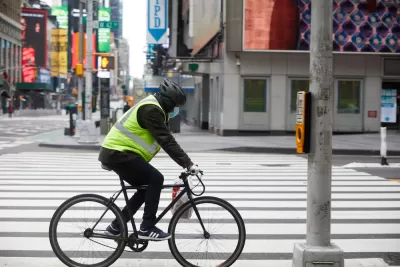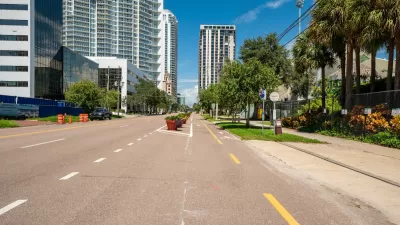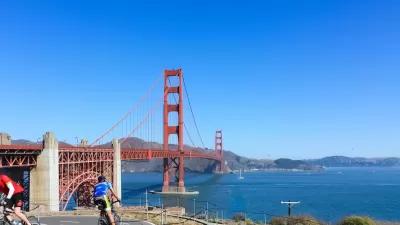The ruling gives people on bikes the same rights as drivers when it comes to police stops.

According to a Streetsblog NYC article by Julianne Cuba, “The highest court in New York this week decided that bicyclists should have the same protection as car drivers against unlawful search and seizure — a decision that connects to the city’s long history of cops targeting people of color who get around by bike.”
The court ruled that the 2014 arrest of a cyclist later found to be carrying a gun amounted to unreasonable search and seizure that violates the Constitution. “‘What the court held is that the officer didn't have the basis to stop him and based on just seeing a bulge in his waistband,’ said NYCLU senior attorney Daniel Lambright.”
The ruling puts cyclists on an equal footing (so to speak) with people in cars, where courts have generally ruled that “stopping a person in a car is such a ‘restriction of the liberty of an individual’ that it should be considered a seizure.” Advocates say it will limit the number of violent interactions with police, particularly for people of color. “According to the most recent stats, police wrote 421 summonses for biking on the sidewalk last year. Eighty-three percent of the tickets where the officer included the race of the suspect were issued to Black or Hispanics, who comprise roughly 50 percent of the population. Only 8 percent of the tickets were written to white people, who comprise roughly 40 percent of the population.”
FULL STORY: New York’s High Court Rules in Favor of Protecting Cyclists’ Constitutional Rights

Manufactured Crisis: Losing the Nation’s Largest Source of Unsubsidized Affordable Housing
Manufactured housing communities have long been an affordable housing option for millions of people living in the U.S., but that affordability is disappearing rapidly. How did we get here?

Americans May Be Stuck — But Why?
Americans are moving a lot less than they once did, and that is a problem. While Yoni Applebaum, in his highly-publicized article Stuck, gets the reasons badly wrong, it's still important to ask: why are we moving so much less than before?

Using Old Oil and Gas Wells for Green Energy Storage
Penn State researchers have found that repurposing abandoned oil and gas wells for geothermal-assisted compressed-air energy storage can boost efficiency, reduce environmental risks, and support clean energy and job transitions.

Updating LA’s Tree Rules Could Bring More Shade to Underserved Neighborhoods
A new USC study finds that relaxing Los Angeles’ outdated tree planting guidelines could significantly expand urban tree canopy and reduce shade disparities in lower-income neighborhoods, though infrastructure investments are also needed.

California's Canal Solar Projects Aim to Conserve Resources and Expand Clean Energy
California’s Project Nexus has begun generating electricity from solar panels installed over irrigation canals, with researchers and state agencies exploring statewide expansion to conserve water and boost clean energy production.

HHS Staff Cuts Gut Energy Assistance Program
The full staff of a federal program that distributes heating and cooling assistance for low-income families was laid off, jeopardizing the program’s operations.
Urban Design for Planners 1: Software Tools
This six-course series explores essential urban design concepts using open source software and equips planners with the tools they need to participate fully in the urban design process.
Planning for Universal Design
Learn the tools for implementing Universal Design in planning regulations.
Heyer Gruel & Associates PA
City of Moreno Valley
Institute for Housing and Urban Development Studies (IHS)
City of Grandview
Harvard GSD Executive Education
Salt Lake City
NYU Wagner Graduate School of Public Service
City of Cambridge, Maryland





























